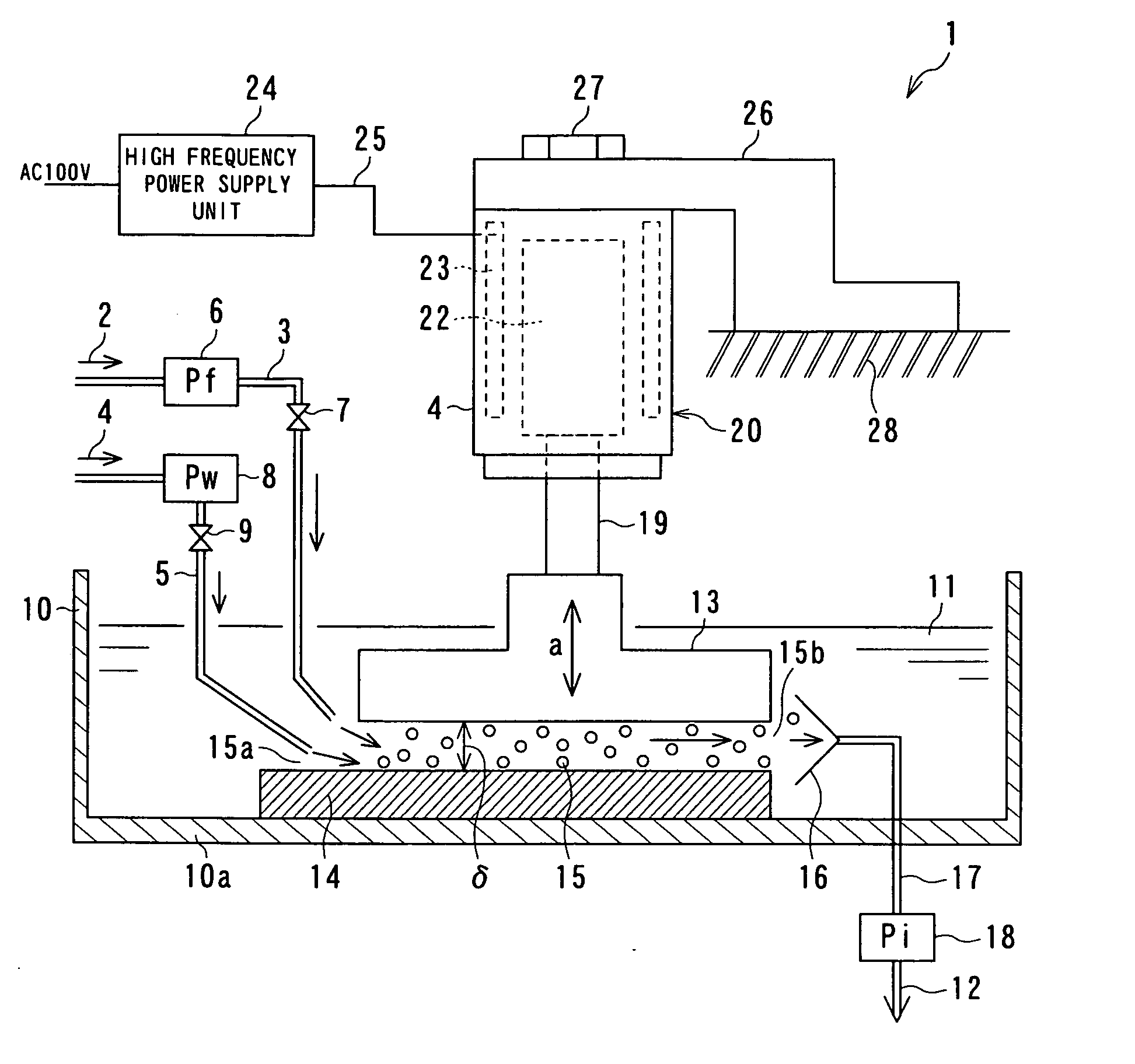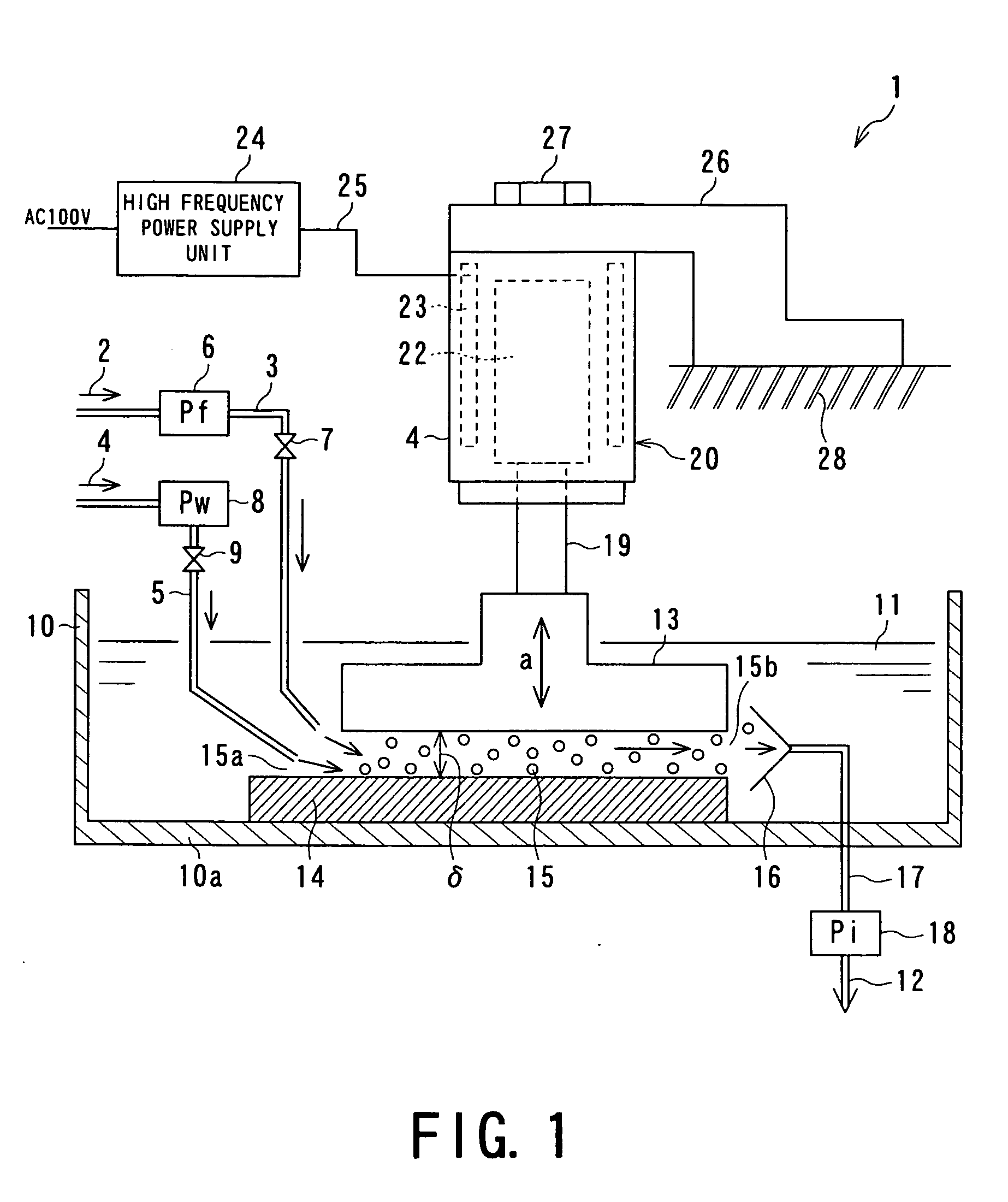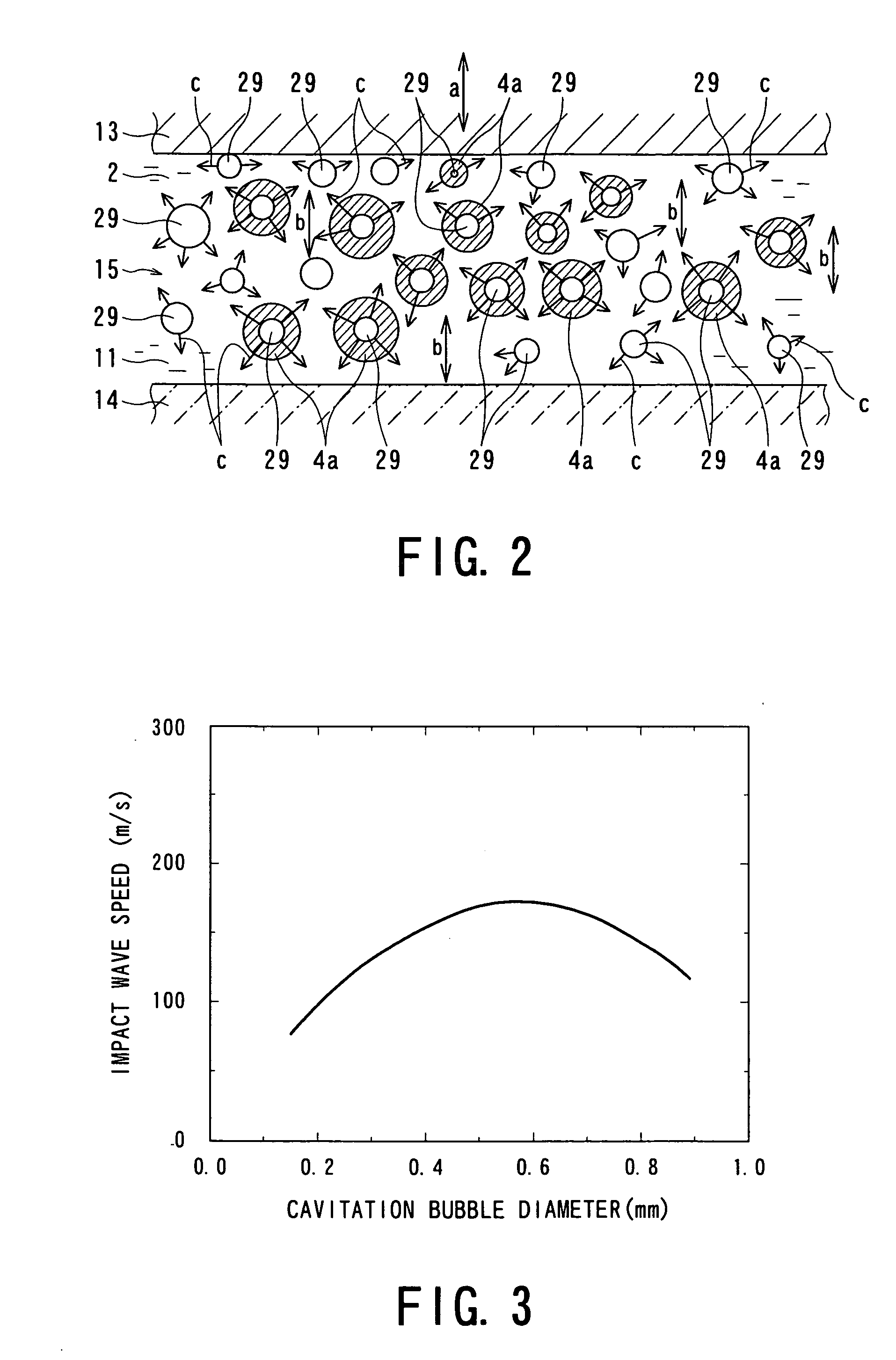Liquid mixing apparatus and method of liquid mixing
a liquid mixing and liquid technology, applied in the direction of combustion-air/fuel-air treatment, machines/engines, transportation and packaging, etc., can solve the problems of large size of the exhaust gas-cleaning system of these vehicles, large amount of exhaust gas from their engines, and air pollution to impair human health, etc., to achieve high mixture density, high quality, and high cavitation effect
- Summary
- Abstract
- Description
- Claims
- Application Information
AI Technical Summary
Benefits of technology
Problems solved by technology
Method used
Image
Examples
third embodiment (fig.9)
[Third Embodiment (FIG. 9)]
[0117] A third embodiment of the present invention provides a liquid-mixing apparatus and liquid-mixing method of mixing at least three liquids. FIG. 9 is an illustration showing a configuration of the liquid-mixing apparatus of the third embodiment. The configuration of this embodiment is substantially the same as that of the second embodiment except the arrangement of lines for supplying liquid mixture components. The same components shown in FIG. 9 as those shown in FIG. 6 have the same reference numerals and descriptions about the components are omitted.
[0118] With reference to FIG. 9, the apparatus of this embodiment includes a first tank 81, a second tank 82, and a third tank 91 acting as sources for supplying respective three different liquids.
[0119] The first tank 81 contains an oil fuel such as a fuel oil, a gas oil, a waste oil (for example, engine oil), or a waste edible oil.
[0120] The second tank 82 contains, for example, an oil other than t...
fourth embodiment (fig.10)
[Fourth Embodiment (FIG. 10)]
[0126] A fourth embodiment of the present invention provides a liquid-mixing apparatus and liquid-mixing method of producing a mixture containing a high-viscosity liquid. FIG. 10 is an illustration showing a configuration of the liquid-mixing apparatus of this fourth embodiment. The configuration of this embodiment is substantially the same as that of the second embodiment except an arrangement of lines for supplying liquid mixture components. The same components shown in FIG. 10 as those shown in FIG. 6 have the same reference numerals and descriptions about the components are omitted.
[0127] With reference to FIG. 10, the apparatus of this embodiment includes a first tank 81 and a second tank 82 acting as sources for supplying respective two different liquids.
[0128] The first tank 81, as well as that described in the second embodiment, contains an oil fuel such as a fuel oil, a gas oil, a waste oil (for example, an engine oil), or a waste edible oil. ...
fifth embodiment (fig.11)
[Fifth Embodiment (FIG. 11)]
[0133] A fifth embodiment of the present invention provides a liquid-mixing apparatus and liquid-mixing method of producing a creamy liquid mixture with a fine texture. FIG. 11 is an illustration showing a configuration of the liquid-mixing apparatus of this fifth embodiment. The configuration of this embodiment is substantially the same as that of the second embodiment except an arrangement of lines for supplying liquid mixture components. The same components shown in FIG. 11 as those shown in FIG. 6 have the same reference numerals and descriptions about the components are omitted.
[0134] With reference to FIG. 11, the apparatus of this fifth embodiment is provided with, for example, a first tank 81 and a second tank 82 acting as sources for supplying respective two different liquids and further includes an air supply line 95 for supplying air.
[0135] The first tank 81 contains a liquid component such as an edible oil, a cosmetic fat, or a medicated oil...
PUM
| Property | Measurement | Unit |
|---|---|---|
| Distance | aaaaa | aaaaa |
| Time | aaaaa | aaaaa |
| Size | aaaaa | aaaaa |
Abstract
Description
Claims
Application Information
 Login to View More
Login to View More - R&D
- Intellectual Property
- Life Sciences
- Materials
- Tech Scout
- Unparalleled Data Quality
- Higher Quality Content
- 60% Fewer Hallucinations
Browse by: Latest US Patents, China's latest patents, Technical Efficacy Thesaurus, Application Domain, Technology Topic, Popular Technical Reports.
© 2025 PatSnap. All rights reserved.Legal|Privacy policy|Modern Slavery Act Transparency Statement|Sitemap|About US| Contact US: help@patsnap.com



